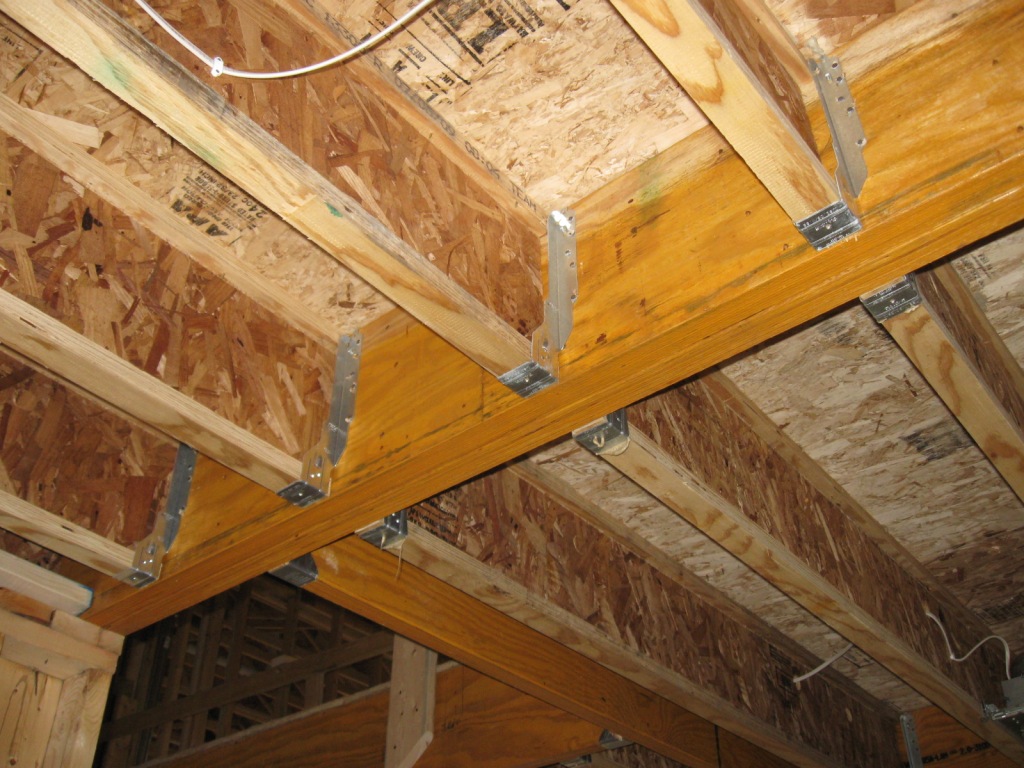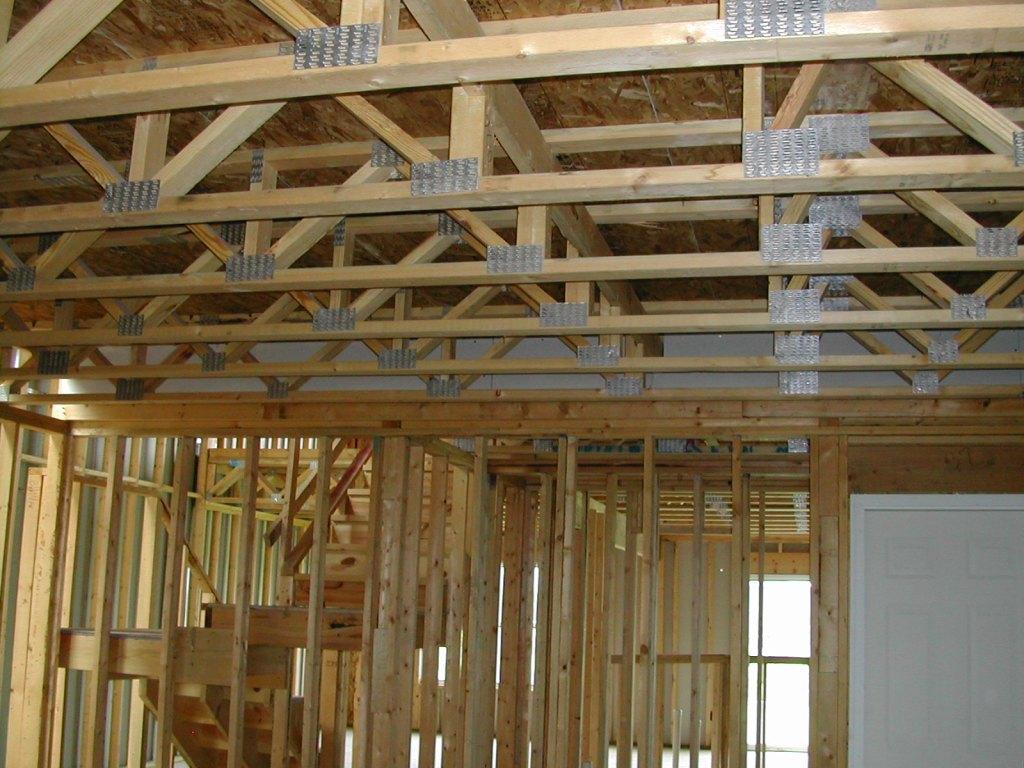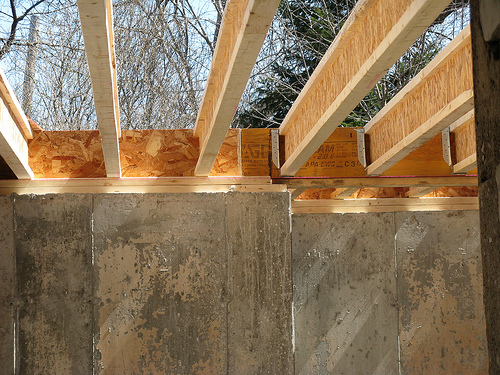Should you use I-joists for your new home? What are the advantages and disadvantages to using them to support your new floors? What are the alternatives to I-joists? We will try to answer some of these questions below. The good news is, we have used all of the options discussed and can give you some insight as to which might fit your new home project best.
Options for Floor Framing
You can go the traditional floor framing method with dimensional lumber, otherwise known as 2×10’s or 2×12’s. Or, you can use a manufactured floor truss, which is typically made up of 2×3 or 2×4 members and are designed and built by your local truss plant. The third option would be to use I-joists which are a manufactured product typically made up of OSB (oriented strand board or similar material) webs and top and bottom flanges of dimensional or ply material. There are other variations of floor framing members but these are the top three we have used. Let’s go through them one at a time.
Dimensional floor joists are the old method for framing floors. Basically, a tree is cut down and milled to produce 2×10’s or 2×12’s. Also called dimensional lumber, these floor joists are easy to get and require no special design for installation. The installation methods are pretty standard and are therefore known by most carpenters. The worst thing about using traditional floor joists are the price fluctuations. The prices can move up and down big time over a small period of time. This can really impact your budget unless you are able to lock in the price when your project is started. The other negative aspect of dimensional floor joists are the span. The other options noted below can span greater distances, allowing for more open floor plan designs. One last option that can cause floor squeaks with 2×10’s and 2×12’2 are the smaller widths. The 1.5 inch width can cause carpenters to miss the joist when nailing from up above. And when a nail just misses the joist, a squeak can occur.
Build your own small custom home for $165k. Click for details.
Floor trusses are another option for framing your new home floors. The two biggest positives of using floor trusses are the greater spans and open spaces for running HVAC and plumbing through them. This makes floor trusses a great option for home plans that are wide open. Another great thing about floor trusses is the wide flange to nail through. This helps prevent the floor squeaks mentioned above.
There are several negatives associated with floor trusses. First, they require a special design and layout and are custom made for each project. This typically leads to higher costs. And because they must be made for each job, they typically have a longer lead time from time of order. They also require special bracing so it’s essential that a quality check is performed after installation to make sure the braces were installed correctly to prevent floor bounce.
I-joists can be a great product for a new home project. Your carpenters will like them because they are lighter…which makes it possible for one person to install. And similar to the floor truss, I-joists can span greater distances than 2×12’s. Most I-joists also come with knockouts to run plumbing and wires through to save time on drilling. The prices are also more stable than dimensional lumber. And if you are building a green home you will like I-joists as they save old growth trees by using smaller, recycled wood to make up the parts.
The biggest negative to using I-joists are the special design and layouts required. Typically, the company supplying the I-joists creates a special, engineered layout showing sizes, spacing and connections. The supplier will typically include all special connectors and beams within the floor. Keep in mind, you will need to keep a set of the plans showing the design on site to show the inspector.
The only other possible negative associated with I-joists relates to fires. According to fire departments across the country, these manufactured framing members tend to burn faster than traditional lumber. This can create dangerous situations for fire professionals when they fail sooner than expected.
Tips for Using I-joists
- Make sure the supplier includes everything for the floor system in the bid. This includes layout, connectors, beams…etc.
- Use a design criteria of L/480 for deflection (L is the length of the joist). This will minimize the “bouncey” feel to the floor. Code is L/360…so L/480 allows less deflection when weight is applied
- Check the installation with the layout to make sure everything was done exactly per plan
- Review cutting and notching details with your plumbers, electricians and HVAC installers prior to starting
- Notify your architect that you will be using I-joists and give her a copy of the layout to check the affects on the plan
Are you thinking about building your dream home? Be sure to checkout our great videos and articles on how to build your own home. We offer some one-of-a-kind resources to help you save big money on your project at our ESTORE. For more tips on saving money with engineered products, check out our post titled…Old Growth Lumber: Reduce and Save Money When Building




